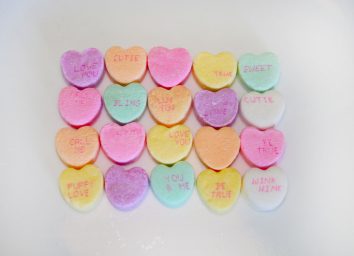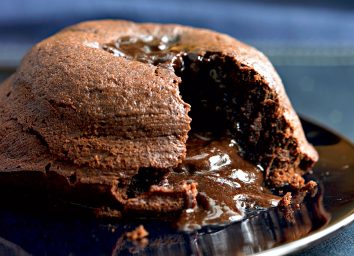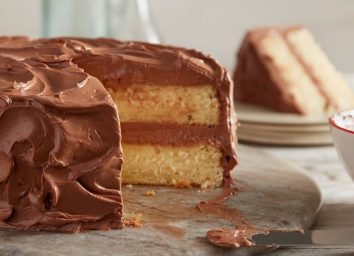Why Exactly Is Red Velvet Cake Red?
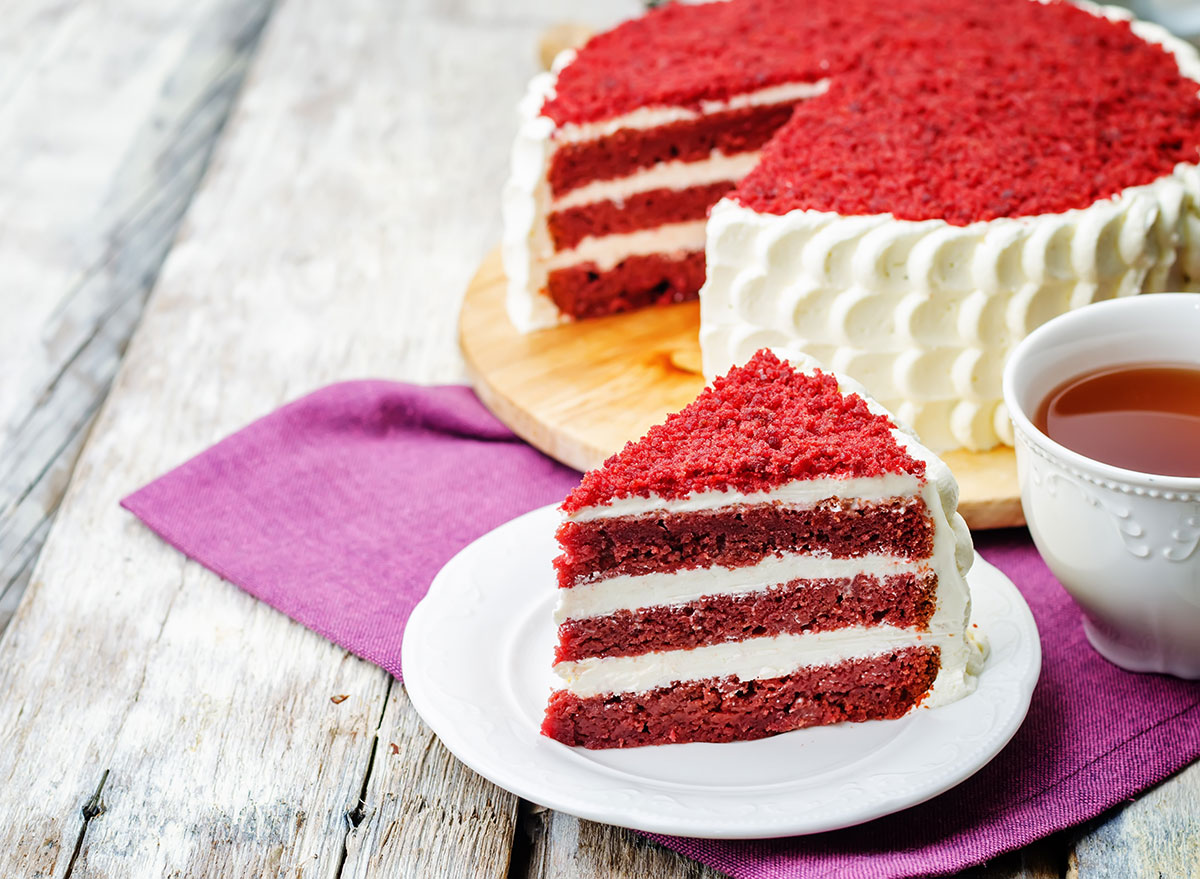
Thanks to its lovely red hue, red velvet cake is a festive favorite for celebrations year-round. The dramatic shade adds a dose of color to the table, and biting into its creamy cream cheese icing makes for a sweet treat no one can resist. But what, exactly, makes red velvet cake different from a chocolate one? And why is it even red? The chocolate-ish cake's history is as rich as the dessert and there are several layers to it. Here's the skinny on the red velvet cake and most importantly: Why is red velvet cake red?
Red velvet cake has roots in the Victorian era.
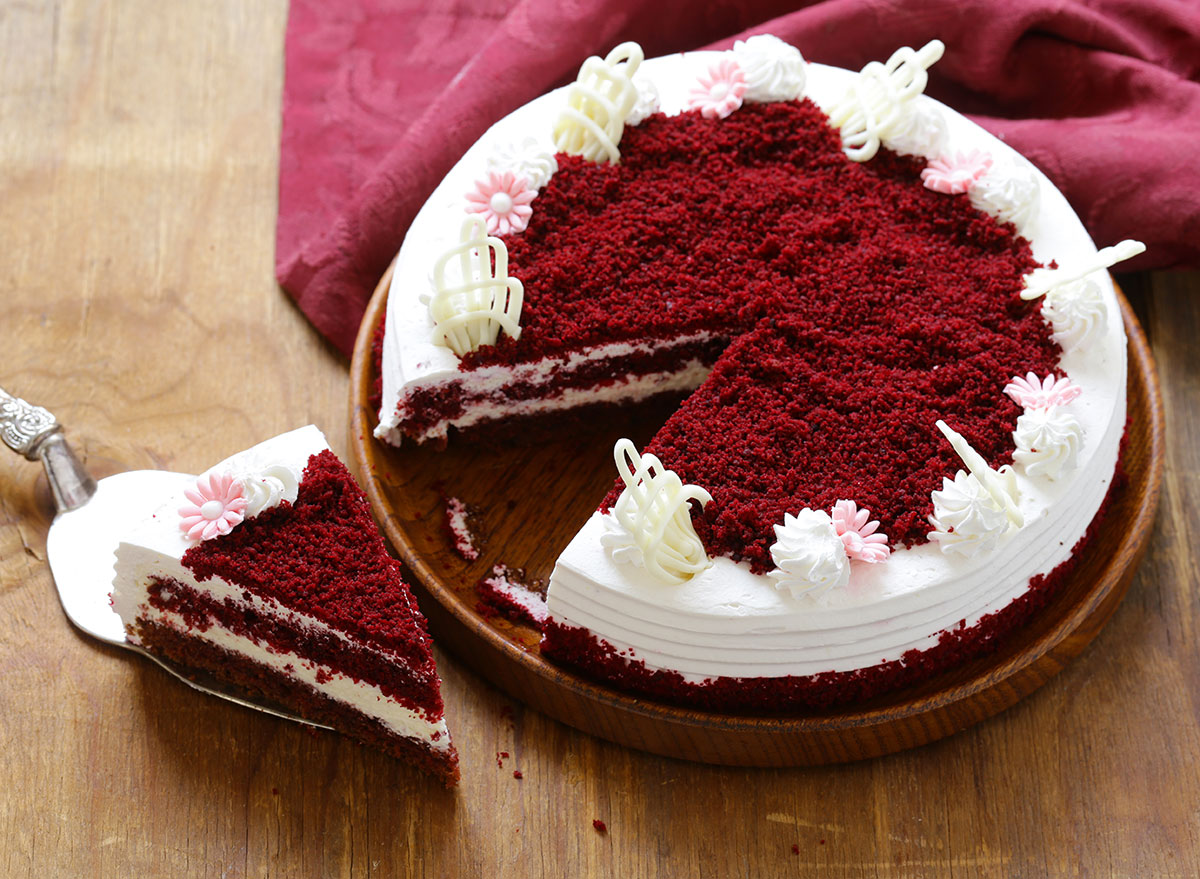
Apparently, red velvet cake wasn't always red, says Melissa Walnock, executive pastry chef and the instructor at The Culinary Institute of America's Apple Pie Bakery Café, a public restaurant/café that is also a classroom for the college's baking and pastry arts majors. It started out simply as "velvet cake."
"The velvet cake is said to have originated in the Victorian Age and was considered a fancy dessert," Walnock says. "The velvet in the name was meant to describe the texture of the cake."
Apparently, cooks discovered that adding almond flour, cornstarch, or cocoa to the cake mix would soften the protein in the flour, which resulted in a finer-textured cake than cakes made entirely of regular flour, according to The New York Times. So the cocoa wasn't actually used in these recipes to make a chocolate cake; it was actually used as an ingredient to change the texture.
How and why did the velvet cake end up red?
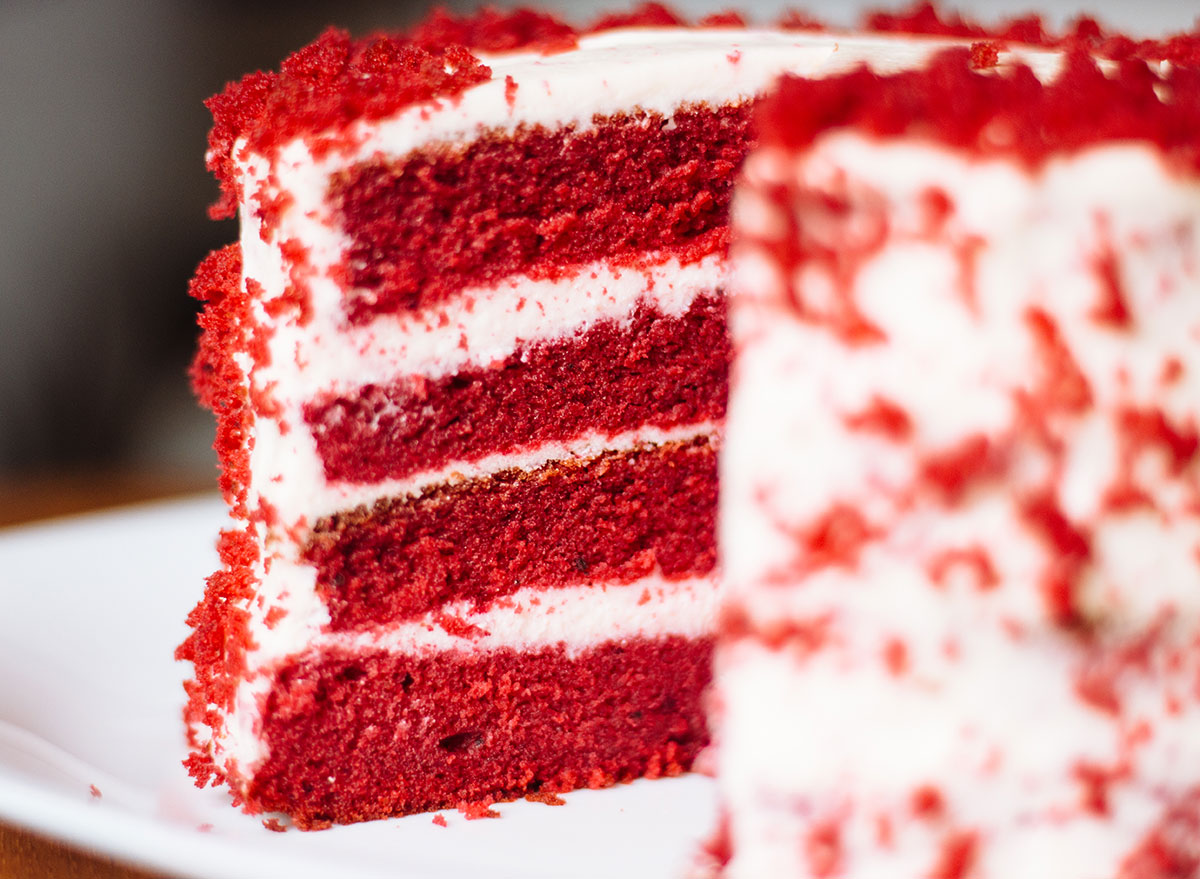
At the time when the velvet cake was catching on, the dark chocolatey devil food's cake was also on the rise. According to pastry chef Stella Parks, author of the cookbook, BraveTart: Iconic American Desserts, it was in the early 1900s that the combination of both these recipes created the "velvet cocoa cake."
The recipe rose in popularity during the Depression era as it called for cheap, raw cocoa powder instead of chocolate bars (which were more expensive as they're made with cocoa butter, cocoa solids, and sugar). Eventually, as the velvet cocoa recipe made its way to the southern states, buttermilk was added to the list of ingredients. Once buttermilk was used in the recipe, something interesting started to happen.
The combination of the acidic buttermilk and raw cocoa powder with a neutralizing baking soda spurred a chemical reaction that unleashed the natural reddish colors of the cocoa. So no, the cake wasn't a super bright red that most people accomplish today thanks to food coloring, but it was more of a red-brownish shade than the earthy, deep brown of a regular chocolate cake.
However, it was the Adams Extract company out of Texas that is credited with bringing the red velvet cake you know and love to true popularity. The company sold food coloring and flavor extracts and it was among the first to introduce tear-off recipe cards to encourage the use of their products.
Legend has it that after the owners of the company ate a velvet cake at the Waldorf-Astoria in New York City, they were inspired to replicate the recipe using their own products. It was in the 1940s that Adams Extract printed a red velvet cake recipe, which was a velvet cocoa cake with food coloring, and it took off.
So what makes a red velvet cake different from a chocolate cake?
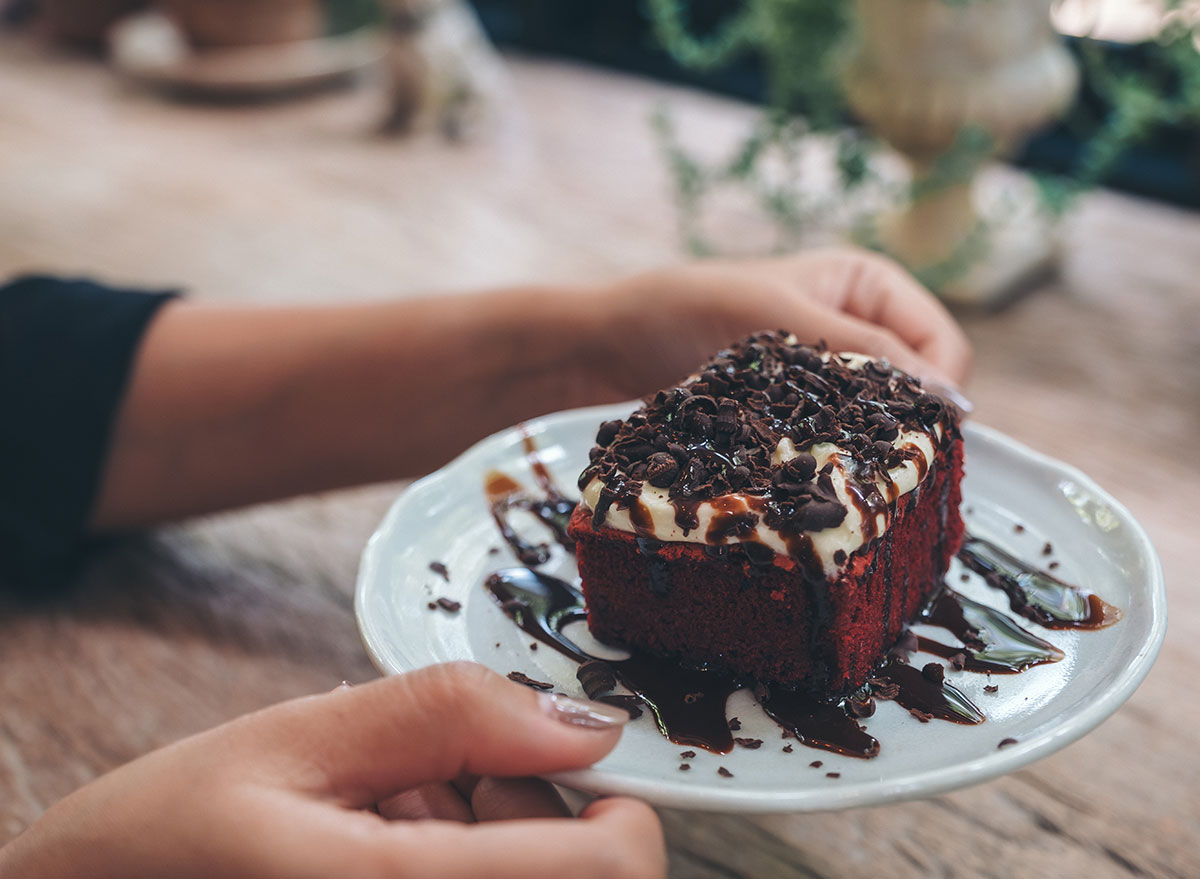
"It's not necessarily a chocolate lovers cake, it's a red lovers cake," says Kaija Knorr, private chef on Nantucket, Massachusetts, and owner of Cook in the Cottage. "It's a one trick pony—if you wanted an amazing chocolate flavor, you'd go for a death by chocolate cake or similar cake."
Although red velvet cake recipes call for cocoa powder, the cake is a far cry from chocolate cake. Red velvet cake has a lighter chocolate flavor than chocolate cake because it uses a couple tablespoons of cocoa powder instead of full-flavored chocolate bar squares.
Additionally, the red cake usually includes acidic ingredients—either buttermilk or vinegar—something you don't find in a standard chocolate cake.
And most obviously, red velvet cake isn't brown like a rich chocolate cake is. Typically, a red velvet cake is topped with a cream cheese-based frosting rather than a chocolate frosting, says Knorr, so that's the most obvious difference between the desserts besides the color.
The red velvet cake, now.
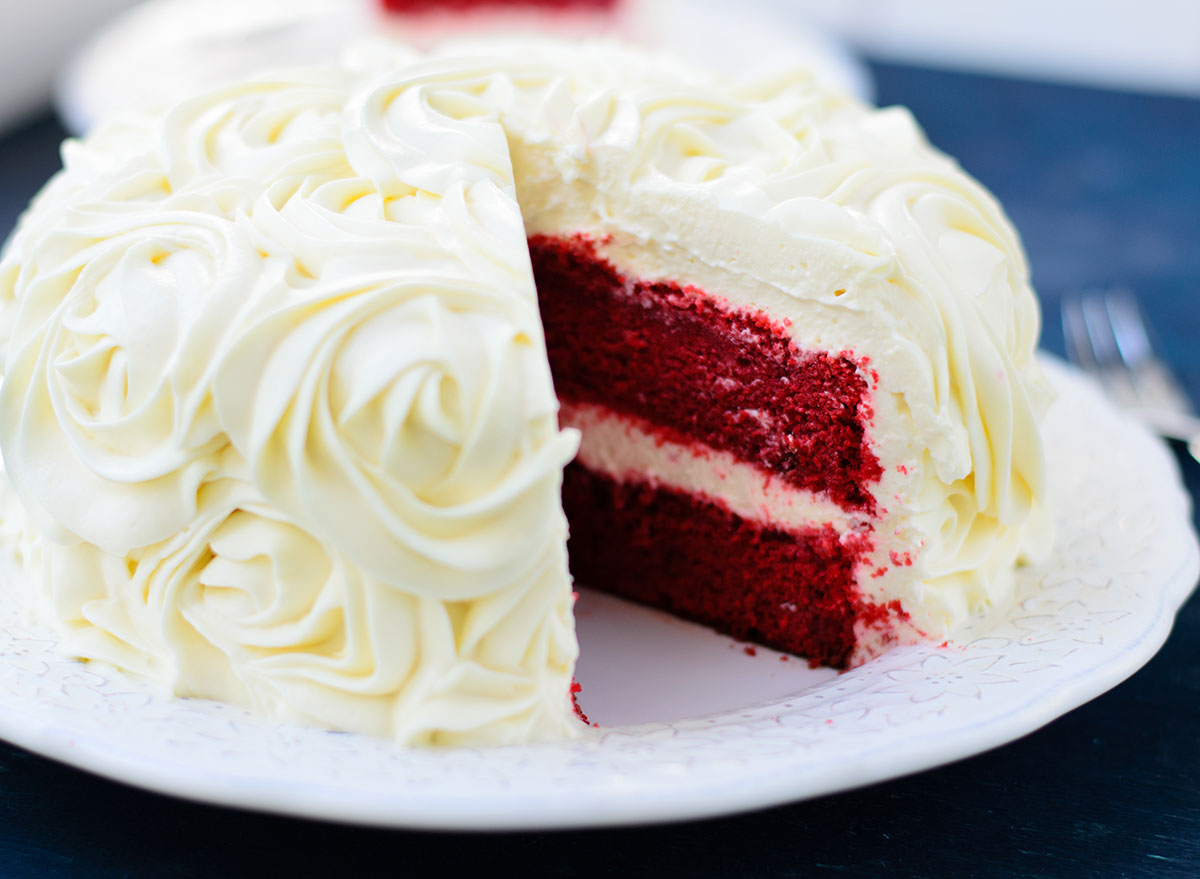
If you're looking to replicate the original red velvet cake sans red food dye, you'll need to take a special trip to the grocery store. Whereas the original recipe (pre-Adams Extract) used raw cocoa powder, most cocoa powders sold now are "alkalized" or "dutched." This means they go through a chemical process that lowers their acidity and also decreases their antioxidant levels. Without those reddish-hued antioxidants, you won't get the same muted red color of the original recipe. You'll want to look for a raw, cacao powder (which is different from "cocoa" powder in that it's not roasted), like Navitas Organics.
Another way to ditch the dye? Consider using another unexpected ingredient: beets.
"Some people are now using red beet juice as a natural coloring in place of red dye because of health side effects from red dye," says Knorr. "The color of the cake is more of a purple tinge if you use the beet juice vs the red dye." Knorr prefers to add roasted beets to her red velvet cake recipe because the beets add color, as well as moisture.
"Perhaps not as light and fluffy and slightly dense, but you still get that wonderful chocolate flavor and a very moist cake," she said. And that's all that really matters, right?
